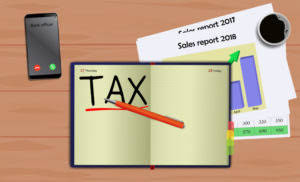
While T accounts are useful for visualizing individual account balances, they may become cumbersome for complex transactions or large volumes of data. Additionally, they require manual entry and may not be as efficient in computerized accounting systems. Yes, T accounts can be used for all accounts, including assets, liabilities, equity, revenues, and expenses. Each account has its T account to record transactions specific to that account.
- They’re simply words representing where cash is coming from, and where it’s flowing to, within a business.
- The typical accounts include accounts of assets, liabilities, shareholders’ equity, revenues, and expenses, etc.
- This kind of transparency is a game-changer for making smart financial decisions.
- Now, every business has its own chart of accounts that depends on the industry they are a part of and the financial activities they lead.
- Okay, for the first transaction, there will need to be a credit to the Cash T account for $300 and a debit to an equipment T account for $300.
- A general ledger is a formal representation of a company’s financial statements where the debit account and credit account records are validated with a trial balance.
Using T Accounts for Transactions: A Step-by-Step Guide
Below is a short video that will help explain how T Accounts are used to keep track of revenues and expenses on the income statement. T Accounts are also used for income statement accounts as well, which include revenues, expenses, gains, and losses. These entries are recorded as journal entries in the company’s books. Yes, T accounts can be used in computerized accounting systems.

Journal Entry Tracking
- A T-account is an informal term for a set of financial records that uses double-entry bookkeeping.
- Let’s say you want to account for the activities of Busy Bee Bakery and for the example’s sake, they have $500 in their cash account.
- T-accounts make it easy to see how each transaction affects your accounts, helping you keep track of all the ins and outs.
- They are foundational tools in bookkeeping and accounting for recording, analyzing, and summarizing financial information.
This visual representation helps them ensure their records’ accuracy and easily prepare financial statements. They provide a deeper understanding of individual accounts, making them essential tools for accountants and anyone who wants to get a grip on their finances. So, the next time you encounter a T-account, remember, it’s not just a fancy T.
Discover more from Accounting Professor.org
This helps them visualize the performance of their investments and make informed decisions about buying, selling, or holding. You’re a budding entrepreneur who just launched your dog walking service. You can use a T-account for “Pet Sitting Fees” to record your income from each walk. This helps you understand your revenue stream and make informed decisions about your business. T-accounts cannot perform sophisticated financial analysis techniques, such as ratio analysis, variance analysis, or scenario modeling.

It really shows how useful it is to try to draw out transactions in T-accounts before they are committed to the company records. This prepaid £6000 represents an asset because my landlord owes me 3 months usage of his property since I have paid rent in advance. In January, I pay £6000 in cash to the landlord, so my bank (asset) account is credited £6000. In this section, I’m going to go through different types of transactions, and I’ll be using T-accounts to display the movement of value through the business. I will use my coffee shop to represent a business throughout these examples. The left-hand side is where you enter debits whilst the right-hand side is where you enter credits.

On the other hand, a debit increases an expense account, and a credit decreases it. T accounts help organize and understand financial transactions by showing how debits and credits affect accounts. They are foundational tools in bookkeeping and accounting for recording, analyzing, and summarizing financial information. It makes it a valuable tool for any student pursuing a career in accounting, as it allows for a more in-depth understanding of an organisation’s financial standing. T accounts provide a clear and concise way to unearned revenue track the flow of financial transactions for individual accounts. They facilitate the recording and analysis of transactions, making it easier to prepare financial statements and understand the financial health of an organization.
- T accounts assist in budgeting and financial planning by tracking expenses, revenues, and other financial activities.
- Now you’re equipped to tackle those transactions with confidence, understand your business finances like a pro, and make smarter decisions for the future.
- Let us understand the concept in depth through understanding the related terminologies of a T account balance through the discussion below.
- With the outstanding bill paid, accounts payable account is debited by £700, reducing its value and showing that I no longer owe this amount.
- One of these accounts is always debited, while the other always credited.
While traditional T accounts are manual, computerized systems often display accounts in a T format electronically, allowing for easier recording, tracking, and analysis of transactions. With automation handling the heavy lifting, accountants can shift https://www.bookstime.com/articles/accounting their focus to the bigger picture. T accounts become a powerful tool for developing a strong conceptual understanding of accounting principles. You can use them to map out complex transactions, identify potential errors, and better understand how different accounts interact. Imagine using software that automatically populates a T account based on a chosen transaction, allowing you to dissect its impact and ensure everything’s in balance. Entrepreneurs and small business owners don’t always have a dedicated accounting team.
- Here, you will have the option to add money, vehicles, weapons, and more.
- They facilitate the recording and analysis of transactions, making it easier to prepare financial statements and understand the financial health of an organization.
- That’s why most businesses prefer automating their finances with cloud accounting software, instead.
- A T account (or general ledger account) is a graphical representation of a general ledger account.
- Trump, who envisions a grand bargain with China that increases US exports, cracks down on fentanyl exports and restructures TikTok for US users, has suggested Beijing would come around.
- The general ledger is an accounting report that sorts and records a business’ financial transactions, by account.
Acts as a troubleshooting tool
The billionaire Tesla CEO has business in China and has also wielded enormous influence in the early days of the Trump administration. Chinese officials had hoped to establish more direct lines of communication with the new Trump administration, using Musk as an intermediary, one person familiar with the matter said. Chinese officials have sought avenues to reach Trump directly, often through business leaders who have his ear. Trump, who envisions a grand bargain with China that increases US exports, cracks down on fentanyl exports and restructures TikTok for US users, has suggested Beijing would come around. Two senior White House officials tell CNN that the US will not reach out to China first. Trump has told his team that China must be the first to make the move, as the White House believes it is Beijing that has chosen to retaliate and further escalate the trade war.
Any transaction a business makes will need to be recorded in the company’s general ledger. The general ledger is divided up into individual accounts which categorise similar transaction types t accounts together. Every financial transaction is first recorded as a journal entry, into the general journal. So, the general journal is the original book of entries that contains the raw financial data of a business. With that being said, the five most common types of accounts in financial accounting are assets, liabilities, expenses, revenue, and owner’s equity.
